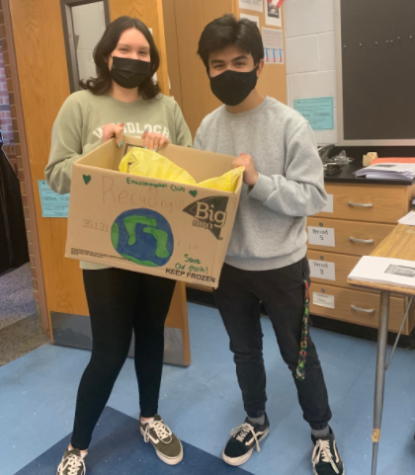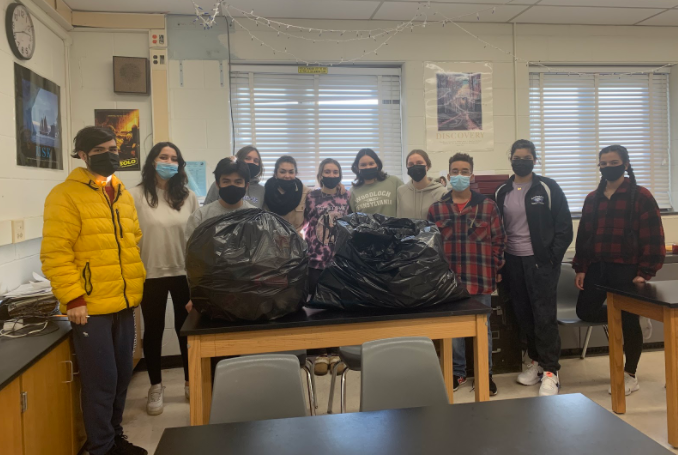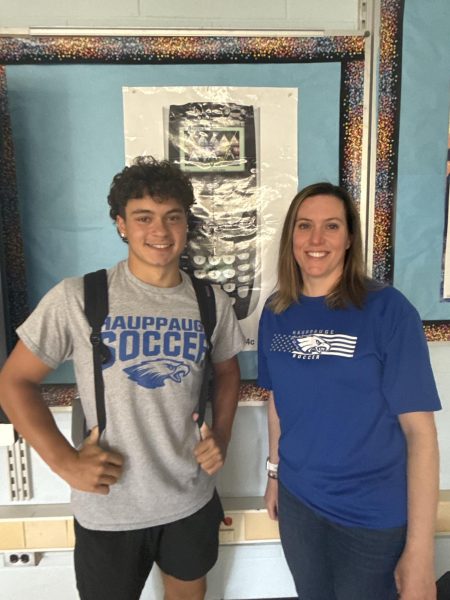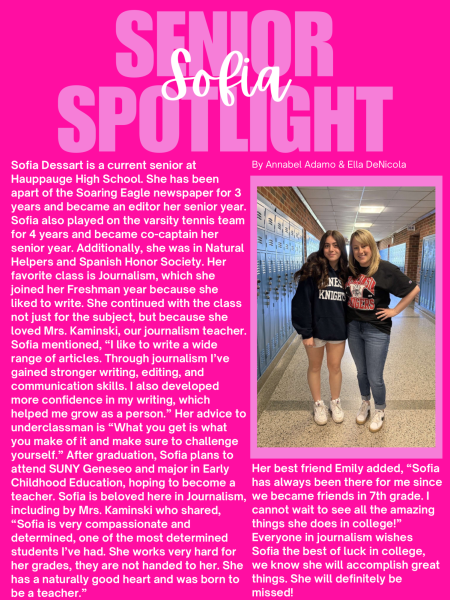A Greener Hauppauge
Plastic bottles can take over 450 years to completely decompose. In the US, 329.5 million people use 50 billion plastic water bottles per year, and only 23% are recycled. That means that the average person uses over 151 water bottles per year, and recycles only about 35 of those. Transferring these statistics to Hauppauge, the students and faculty of our school use approximately 162,700 plastic water bottles a year and recycle only 37,489. Therefore, if we spread the water bottle usage out over time, Hauppauge High School’s waste in water bottles alone can take up to 56,344,950 years to decay. Many intrepid high school readers are probably thinking “We should do something about this.” Luckily, one intrepid group of high schoolers did.
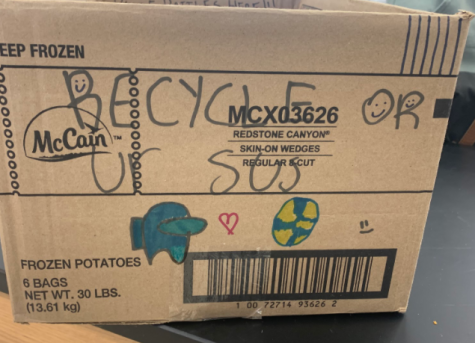
The Hauppauge High School Environmental Club has recently launched a recycling program. In hand-made decorated recycling bins, several science classes across the third floor are collecting plastic bottles to recycle. These bottles are collected once a week by members of the Environmental Club, then taken to the recycling center by club president Laura Lima. The goal is to “offset the amount of plastic waste and metal waste that is going into landfills, and lessen the carbon footprint being [made] by Hauppauge High School.” And thanks to the Environmental Club, many students are beginning to do their part.

Most students very rarely think about recycling. It’s not their fault, it isn’t exactly a staple of the day. Sure, many high schoolers have invested in “Hydro Flasks” or other reusable water bottles, but they’ve yet to replace the convenient plastic. Several students were asked about what type of water bottle they bring to school. Most students pointed out that they use refillable water bottles rather than plastic. Senior Dustin Zhao doesn’t use plastic at all, “I have a refillable [bottle] that I usually use, it’s stainless steel.” Environmental Club member and senior Summer Bloom feel that reusable bottles are “more convenient because you can fill it up.” So there is reason to suspect these new durable bottles could replace. Sophomore Angelo Vargas doesn’t recycle at home or at school, but would if recycling bins were made more accessible. Kayla Krause, from his same grade, does recycle at home but not at school because “there’s nothing that says recycle,” and feels that recycling is “very necessary” for our school. These different points of view can raise confusion; should students be reusing or recycling? Environmental Club President, Laura Lima, explained “It’s always best to have something you can reuse as opposed to buying and using more plastic, so that should always be the first step. But there are people who can’t afford to do that or don’t have the means. For people who are using plastic bottles, who get thirsty and buy a plastic bottle at the lunchroom, it’s great to recycle it and at least let that bottle have a new life.” Club Treasurer Andre Graca also stated “While [reusable bottles] mean fewer bottles for us to collect, it isn’t really a priority for the club…it’s more just doing a part. What waste is there, we are able to help circumvent and clean up.” As it seems, reusable bottles are perfectly useful in preventing waste, but recycling is another viable option to help the environment. The general consensus is that more students would recycle if it was made more accessible; so that is what the Environmental club is doing.
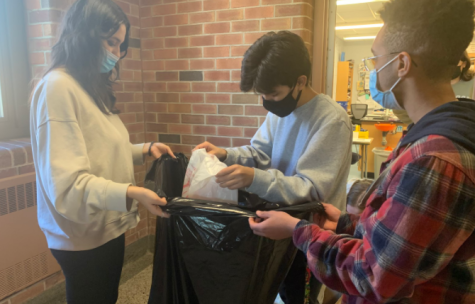
A school-wide recycling program has the potential to do great things, but it will also take a great deal of effort. President Lima has complete faith in the Club’s plan. She stated that “I think that the program is really going to be a stepping stone into a cleaner future for the high school,” and Club Treasurer Andre Graca feels that “The recycling program is a benefit to everyone in really anyway possible; economically, socially, just an overall big help for everyone involved really.” It may seem insignificant; one high school recycling a couple of bottles, how could that make a difference? But we are not alone in the fight. Lima explained, “It’s not just our high school. You look at other high schools across Long Island and they are starting more recycling programs as of late, especially with a growing concern for the status of our environment. So I think the greater number of schools that do participate in something like this, the greater change that we will have. Not just as a single school but as a community.” There is also no reason to suspect any contribution is a small one. Laura Lima’s only one person, but she’s attempting to help a school of over a thousand students become cleaner. “I was just hoping to do my part and to continue this sort of activism and hope for a cleaner future.”

School is where we learn good habits. We learn how to manage our time, how to communicate with other people, and most importantly, how to be a good member of society. And being a good member of society means helping our environment, so it’s natural that we should start that journey in Hauppauge’s halls. The Environmental Club is looking to expand its program across the whole school, and if they keep up their current pace, we’re not far away from a cleaner, greener high school.
